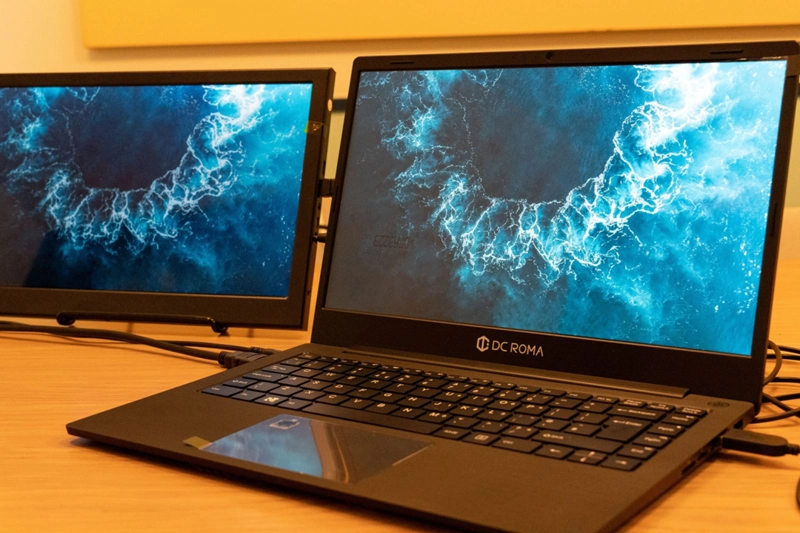
The Revolutionary Potential of RISC-V Laptops: Unleashing a New Era of Computing
In the ever-evolving landscape of computer architecture, the emergence of the RISC-V instruction set architecture has ignited a wave of excitement and innovation. With its open-source nature and modular design, RISC-V has the potential to reshape the entire computing industry, from embedded systems to high-performance computing clusters. One particularly promising avenue is the concept of RISC-V laptops, which could bring unprecedented flexibility, customization, and security to the world of personal computing.
RISC-V: A Brief Overview
RISC-V, which stands for “Reduced Instruction Set Computer – Five”, is an open-source and royalty-free instruction set architecture (ISA). Unlike proprietary ISAs, RISC-V’s open nature enables anyone to design, modify, and implement processors based on its specifications without the constraints of licensing fees. This unique characteristic has fostered a community-driven ecosystem, allowing researchers, engineers, and enthusiasts to collaborate on novel designs and innovations.
At its core, RISC-V adheres to the fundamental RISC philosophy of simplicity, featuring a streamlined set of instructions that execute in a single clock cycle. This approach provides several advantages, including improved power efficiency and the potential for higher clock speeds. Furthermore, RISC-V’s modular structure allows for optional instruction extensions, enabling customization to suit specific application requirements.
The Promise of RISC-V Laptops
The concept of RISC-V laptops holds immense potential, offering a range of benefits that could reshape the laptop market and end-user experience.
- Customizability: RISC-V laptops could empower users to tailor their computing experience to their needs. The modular nature of RISC-V allows hardware vendors to mix and match instruction extensions, optimizing the processor for specific tasks. This adaptability could lead to laptops finely tuned for various applications, such as content creation, gaming, or data analysis.
- Security: Security concerns have plagued the computing industry for years. RISC-V’s open-source nature could provide a new level of transparency and scrutiny in hardware design, reducing the risk of hidden vulnerabilities. Security-conscious users could audit the processor’s design, enhancing confidence in the system’s integrity.
- Innovation Acceleration: RISC-V laptops could serve as a fertile ground for innovation. With traditional proprietary ISAs, hardware vendors often face barriers to entry due to licensing restrictions. RISC-V removes these barriers, allowing startups and enthusiasts to experiment with novel processor designs and technologies, potentially spurring rapid advancements.
- Reduced Vendor Lock-In: Current laptop architectures often tie users to specific vendors due to proprietary components. RISC-V laptops could break this cycle, encouraging healthy competition and driving down costs. Users could switch between different vendors’ components, fostering a more diverse and consumer-centric market.
- Educational Opportunities: RISC-V’s open nature could revolutionize computer science education. Students and researchers could gain hands-on experience with processor architecture design, offering a deeper understanding of how software and hardware interact. This experiential learning could lead to a new generation of innovative computer scientists.
Challenges and Considerations
While the potential benefits of RISC-V laptops are exciting, several challenges and considerations must be addressed to realize this vision.
- Software Ecosystem: Proprietary ISAs have a head start in terms of software compatibility. Developing a robust software ecosystem for RISC-V laptops would require porting existing applications and developing new tools. Collaboration between hardware vendors, software developers, and the open-source community would be essential.
- Performance Optimization: While RISC-V’s simplicity can be an advantage, it might also limit raw performance compared to complex instruction sets in certain scenarios. Achieving competitive performance while maintaining power efficiency would require careful architecture design and optimization.
- Market Adoption: The laptop market is dominated by established players, making it challenging for newcomers to gain traction. Convincing users to transition to RISC-V laptops would require showcasing tangible benefits and offering a seamless transition path.
- Industry Support: While the RISC-V ecosystem is rapidly growing, garnering support from major hardware and software vendors would be crucial. Collaboration with industry leaders would ensure compatibility, availability of components, and long-term sustainability.
Conclusion
The prospect of RISC-V laptops marks a pivotal moment in the evolution of computing. With their customizability, security features, and potential for innovation, RISC-V laptops could reshape how we interact with personal computing devices. However, realizing this potential requires addressing technical challenges and fostering collaboration across the hardware and software domains. If successful, RISC-V laptops could usher in a new era of openness, empowerment, and creativity in the world of laptops and personal computing.
Top of Form
Regenerate